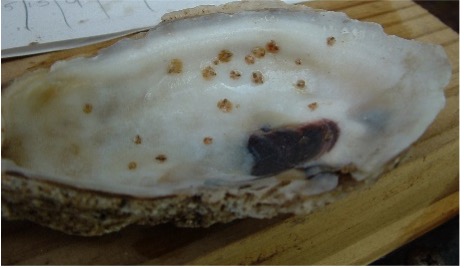

The mid- and long-term cryopreservation of these new genetic resources has become of prime interest for research, genetic improvement (selection, hybridization or polyploidization) and for restoration programs for endangered species or populations. The development of hatcheries combined with the recent adoption of genetic technologies such as selection or polyploidization (see for review, ) has created new genotypes with higher genetic value than wild stocks. Shellfish farming worldwide is mostly based on wild spat. The utility of larvae cryopreservation is discussed and compared with the cryopreservation of gametes as a technique for selection programs and shellfish cryobanking. Furthermore, these performances did not differ between the three initial larval stages of cryopreservation.

In all, the growth and reproductive performances of oysters formerly cryopreserved at larval stages are close to those of controls. In all but two crosses out of 13 tested (P<0.001), development rates of the offspring were not significantly different between frozen and unfrozen parents. Reproductive integrity of the mature oysters, formely cryopreserved at 13☒ hpf and 24☒ hpf, was estimated by the sperm movement and the larval development of their offspring in 13 crosses gamete pools (five males and five females in each pool). Only the batches cryopreserved at 24☒ hpf showed lower survival than the control. At the end of the growing-out phase (982 days), survival of the oysters cryopreserved at 13☒ hpf and at 43☒ hpf was significantly higher (P<0.001) than those of the control (non cryopreserved larvae). From the beginning (88 days) at the end of the ongrowing phase (195 days), no mortality was recorded and mean body weights did not differ between the thawed oysters and the control.

Cryopreservation was performed at three early stages: trochophore (13☒ hours post fertilization: hpf), early D-larvae (24☒ hpf) and late D-larvae (43☒ hpf).

Survival, growth and reproductive performances were studied in juvenile and adult Pacific oysters grown from cryopreserved embryos. At this stage, the spat is passed through a sieving machine in water and sent on to a nursery.This study is the first demonstration of successful post-thawing development to reproduction stage of diploid cryopreserved larvae in an aquatic invertebrate. The micro-spat remains in this controlled environment for a further ten days or so, until it has grown to a size of 1 mm. Using its foot, the pediveliger larva settles on a particle no bigger than itself: this enables "individual" oysters to be obtained.Ī week after setting, the oysters are sieved through a 400-micron mesh in order to remove excess mircocultch, metamorphosis has taken place and the larvae have reached the micro-spat stage. The larvae are surrounded by microcultch : microcultch consists of finely ground oyster shell sieved through a mesh size of 300 microns. The seawater (filtered, purified and heated) is changed regularly and phytoplankton ( Skeletonema costatum) is added on a daily basis to feed the larvae. They are put into mesh baskets placed in water tanks. The eyed larvae from the hatcheryare sent on to 2 oyster micro-nurseries for the setting stage.


 0 kommentar(er)
0 kommentar(er)
